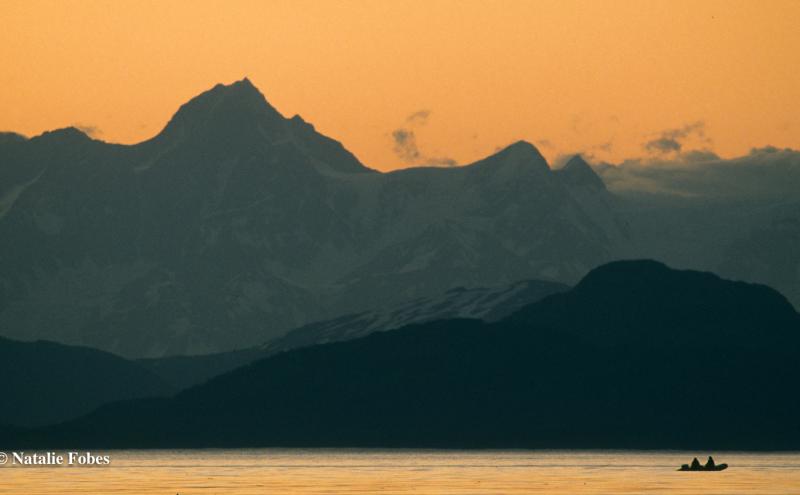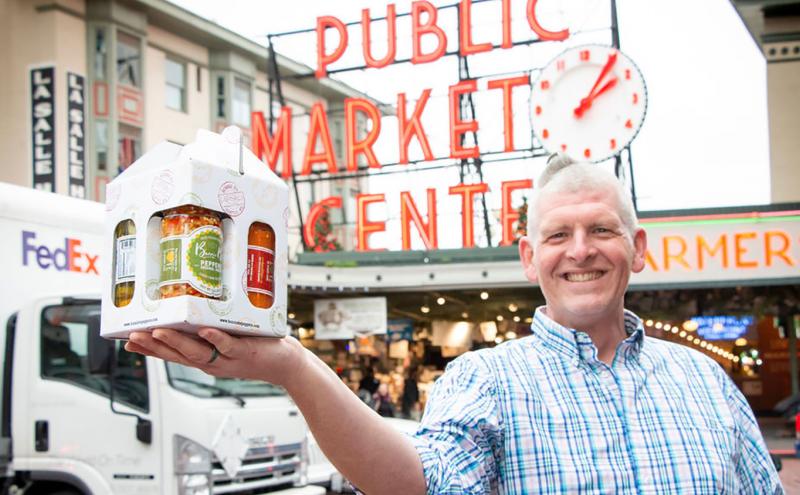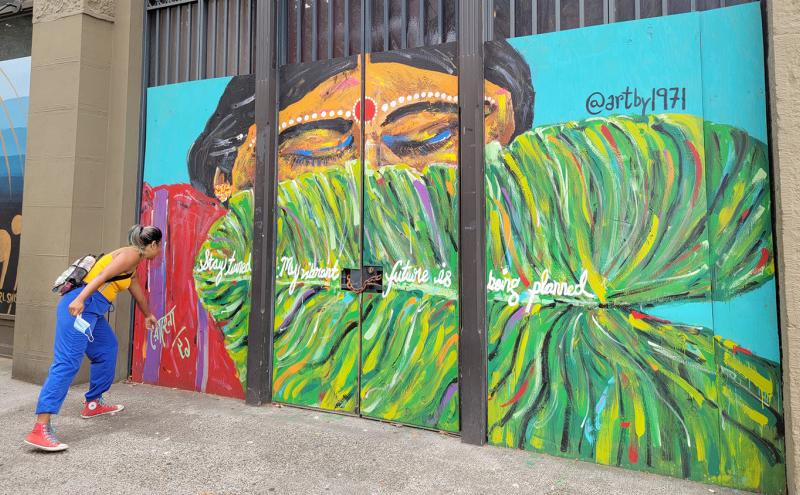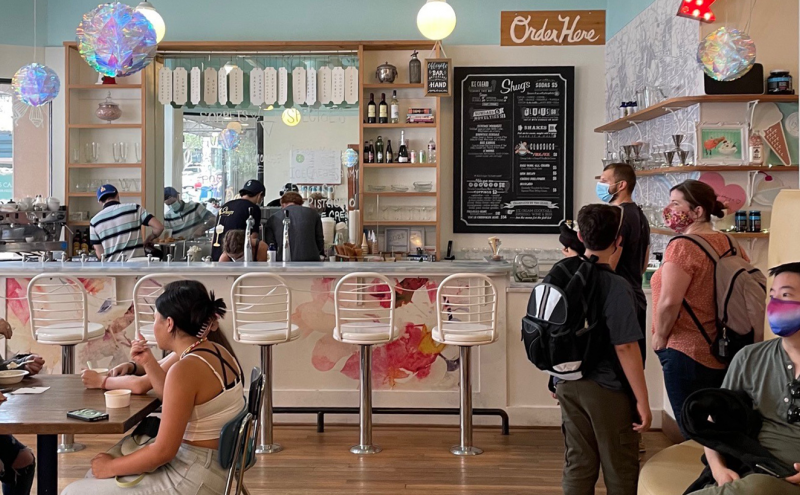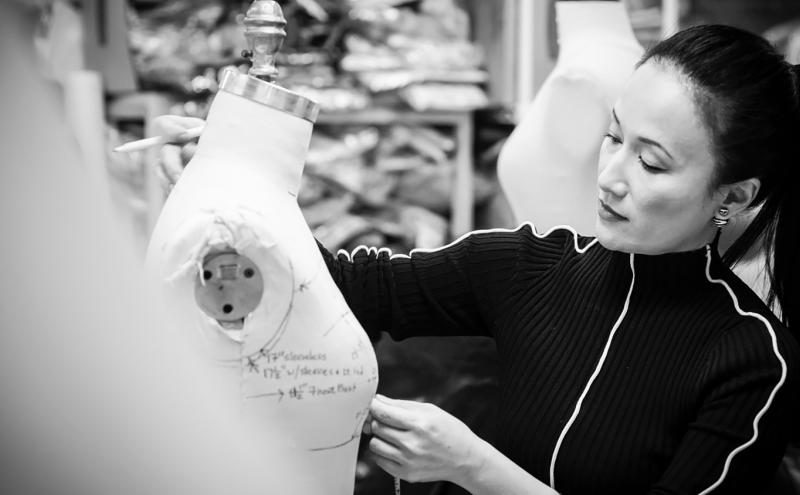
For Seattle fashion designer Luly Yang, the design process begins with a conversation. The unique needs, personality, and style of each individual customer factors into the creation of the perfect piece for an occasion. Yang’s personalized approach to design and creative and innovative style attracts clients from the Seattle region, across the country, and around the world, leading them to her Fourth Avenue showroom located in the Fairmont Olympic Hotel in downtown Seattle.
With a background in graphic design, Yang opened her own couture design studio in 2000 and is now a globally recognized name in the fashion industry, specializing in custom bridal and formalwear and demonstrating her versatility with uniform design for Seattle-based, globally recognized brands like Alaska Airlines and Amazon, and Seattle entertainment complex, Climate Pledge Arena.
Yang’s showroom location – in the downtown core in a luxury hotel, in a city that is a hub for both international and domestic direct flights via Seattle-Tacoma International Airport (SEA) – is the perfect place to conduct global business.
“Customers can come visit us with one easy flight, stay in the hotel, and come to us,” she said. “We have become a destination for many people. I love living in a city with a major airport and the direct connections with the rest of the country and the world.”
Yang gains inspiration from working with an international clientele.
“The diverse group of clients I have makes work much more interesting,” Yang said. “It’s helpful that Seattle is such an international city. Personally, I get inspiration from the environment, place, architecture, nature, and people. When we dip our finger in the Puget Sound, we are already connected to Asia. The ocean connects us all; that’s why I always want to live in a city on the water.”
Buoyed by tourism
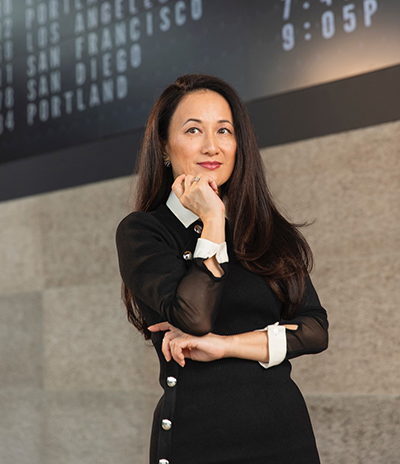
The downtown location of her showroom also draws in tourists and cruise passengers.
“We see a big difference from spring to summer in our business,” she said. “We are based on a core of tourism and cruise is a big part of that.”
When COVID-19 shut down tourism and cruises in 2020, Yang saw a big drop in business. Yang, like many other business owners, had to pivot. She closed the showroom for four months and business shifted from face-to-face to virtual.
“Downtown was not occupied by visitors; there were no travelers coming in,” she said. “Now I see cars pulling up and the hotel is filling up again.”
Yang, who lives near tourist hotspot Pike Place Market, was used to seeing the hustle and bustle downtown with cruise passengers roaming the shops and streets. In 2020, all that came to a halt. This year the market is back and busy again.
“Cruisers are back and there is life in the downtown core,” she said. “We are busier and busier in our showroom. With all the weddings postponed during the pandemic, weddings are now happening all at the same time.”
The return of cruise ships to Seattle in 2022 is expected to bring 1.2 million passengers with 296 ships departing from Seattle. The cruise industry brings nearly $900 million in economic benefit to the region, fueling businesses like Yang's.
A changed world
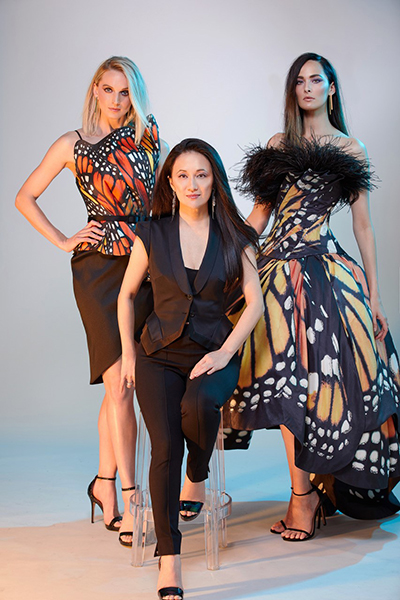 Supply chain challenges have impacted Yang’s access to materials and products since 2020, as she started working with factory partners to produce cloth masks for customers.
Supply chain challenges have impacted Yang’s access to materials and products since 2020, as she started working with factory partners to produce cloth masks for customers.
“(During the height of the pandemic), speed was important to produce and deliver masks quickly enough to protect people,” she said. “It was challenging to not know whether masks would make it in by vessel quickly enough, so a majority of our masks were flown in.”
On the corporate uniform side of Yang’s business, in 2021 the supply chain was more challenging and vessels and shipping containers were difficult to secure globally. Yang said she has been and continues to be fortunate to work with amazing long-term partners and has planned ahead to make all deliveries to her customers on time.
“I am super proud of our team for making this happen,” Yang said.
The pandemic continues to have an impact on the way Yang interacts with clients and conducts business.
“It forced me to become more digital as a designer; it forced me to move ahead. I feel like we jumped ahead five years (technologically).”
In 2022, much of her work has stayed virtual, with around 25 percent of business returning to in-person. It has also shifted fashion-related travel. Before the pandemic, 30 to 40 percent of Yang’s clients were local. Today her business is 90 percent local or online as many are slow to revert back to pre-pandemic practices.
“It’s going to take a couple more years for everyone to feel comfortable to go all in,” she said. “On the positive side, I am able to meet with clients and vendors more quickly with no expectations of long travel time, but it’s good to have a human touch or face-to-face connection. I’m pro getting together. It’s how we are supposed to be living, not just through a screen.”
Yang said one of the reasons she was able to weather the pandemic is planning for the long term and not hesitating to try new things.
“We kept overhead expenses down in the beginning. We had to be careful not to not bite off too much so if something went wrong we could still sustain for a long period of time. If the unforeseen happens, you can push through and be creative,” she said. “Get out of your comfort zone and say yes to things that are new. If we didn’t pivot to make masks, hundreds of workers and factories would have lost jobs. Fabric masks sustained factories and businesses so they can be around to continue working with us in the apparel industry. We need to respect and preserve the artisans and experts in the industry.”
Looking ahead
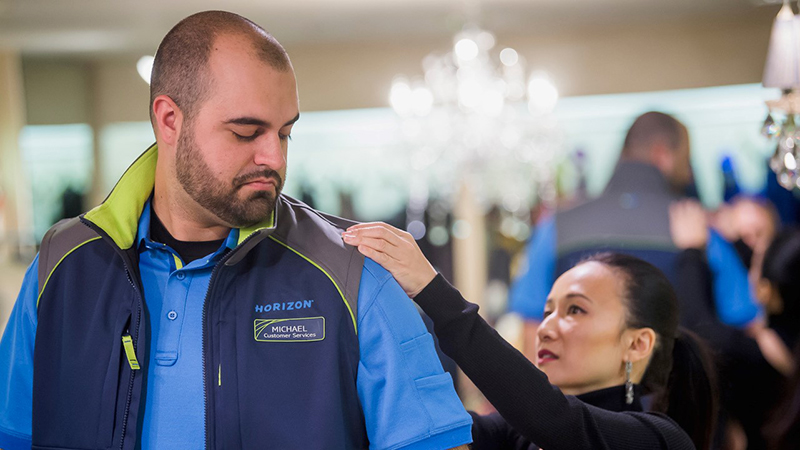
Yang launched her first Travel and Leisurewear line, Luleisure, in 2022, consisting of elevated travel and leisurewear designed to take customers from home to office, travel to Zoom calls, to a nap on a flight, while still looking polished and staying comfortable.
“After the pandemic, the way we live and work has changed,” Yang said. “The lines have blurred between work and leisure. You’re seeing a change in people’s closets too. Items that are for a weekend, nighttime, work, and play will all blend. This collection features this broader functionality.”
As she put together the collection, she drew from her learnings about the travel experience with Alaska Airlines flight crew during the uniform design process.
“We looked at ‘What does comfort mean?’ ‘What do pockets do? All these things we designed into the line. We’re very excited and we’re looking at doing pop ups at different airports in the very near future.”

